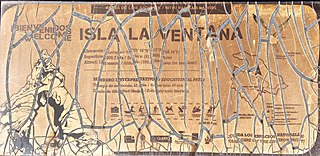
Phyllodactylus xanti is a species of lizard in the family Phyllodactylidae. It is endemic to northwestern Mexico. It is also known as the leaf-toed gecko or Raza Island leaf-toed gecko when referring to the subspecies from the Isla Rasa; at present, there are altogether four recognized subspecies, while several more have been recognized previously.

James Ray Dixon was professor emeritus and curator emeritus of amphibians and reptiles at the Texas Cooperative Wildlife Collection at Texas A&M University. He lived in El Campo, Texas, throughout most of his childhood. He published prolifically on the subject of herpetology in his distinguished career, authoring and co-authoring several books, book chapters, and numerous peer reviewed notes and articles, describing two new genera, and many new species, earning him a reputation as one of the most prominent herpetologists of his generation. His main research focus was morphology based systematics of amphibians and reptiles worldwide with emphasis on Texas, US, Mexico, Central America, and South America, although bibliographies, conservation, ecology, life history and zoogeography have all been the subjects of his extensive publications.
Isla Cayo, is an island in the Gulf of California east of the Baja California Peninsula. The island is uninhabited and is part of the La Paz Municipality.
Isla Danzante, is an island in the Gulf of California east of the Baja California Peninsula. The island is uninhabited and is part of the Loreto Municipality.
Isla Coronados, is an island in the Gulf of California east of the Baja California Peninsula in Baja California Sur state, Mexico. The island is uninhabited and is part of the Loreto Municipality.
Isla El Coyote is an island in the Gulf of California, located within Bahía Concepción east of the Baja California Peninsula. The island is uninhabited and is part of the Mulegé Municipality.
Isla Gallina, is an island in the Gulf of California east of the Baja California Peninsula. The island is uninhabited and is part of the La Paz Municipality.

Isla Las Animas, is a Mexican island in the Gulf of California east of the Baja California Peninsula. The island is uninhabited and is part of the La Paz Municipality.
Isla Mosca, is an island in the Gulf of California, located within Bahía Concepción east of the Baja California Peninsula. The island is uninhabited and is part of the Mulegé Municipality.
Isla Pardo, is an island in the Gulf of California east of the Baja California Peninsula. The island is uninhabited and is part of the Loreto Municipality.
Isla San Ildefonso, is an island in the Gulf of California east of the Baja California Peninsula. The island is uninhabited and is part of the Mulegé Municipality.
Isla Santa Cruz, is an island in the Gulf of California, east of the Baja California Peninsula in Baja California Sur state.
Isla Pond, is an island in the Gulf of California east of the Baja California Peninsula. The island is uninhabited and is part of the Mexicali Municipality.

Isla La Ventana, or the Window, is an island in the Gulf of California, located within Bahía de los Ángeles east of the Baja California Peninsula. The island is uninhabited and is part of the Ensenada Municipality.
Isla Mejia is an island in the Gulf of California east of the Baja California Peninsula. The island is uninhabited and is part of the Mexicali Municipality.
Isla Rasa is an island in the Gulf of California east of the Baja California Peninsula. The island is uninhabited and is part of the Mexicali Municipality. The 0.21 sq./mi island has three small ponds and has small shed located in the center of the island.
Isla Salsipuedes is an island in the Gulf of California off the coast of the Baja California Peninsula. The island is uninhabited and is part of the Mexicali Municipality.
Isla San Lorenzo Norte is an island in the Gulf of California east of the Baja California Peninsula. The island is uninhabited and is part of the Mexicali Municipality. The much larger Isla San Lorenzo Sur is located immediately southeast of Isla San Lorenzo Norte.
Isla San Lorenzo Sur, is an island in the Gulf of California east of the Baja California Peninsula. The island is uninhabited and is part of the Mexicali Municipality. Isla San Lorenzo Norte is located immediately northwest of Isla San Lorenzo Sur.
Isla Piojo, or Lice Island, is an island in the Gulf of California, located within Bahía de los Ángeles east of the Baja California Peninsula. The island is uninhabited and is part of the Ensenada Municipality.





